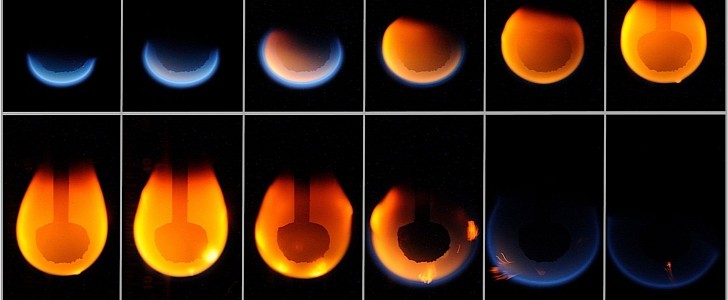Just as it happens when it comes to vessels at sea, fire is one of the biggest dangers space missions can encounter. Away from any help from outside, a spacecraft engulfed in flames is most certainly doomed if the people on board are unable to extinguish the blaze.
Proper materials used for spacesuits and spaceships are extremely important when trying to protect from the effects of fire as well. So is the understanding of how fire behaves in space, and for that, studies have to be conducted.
As it plans to find the best materials for future homes on the surface of the Moon and Mars, but also for upcoming suits and ships, NASA will intentionally set fire on the International Space Station (ISS). It will not do so in the open, but inside something called Combustion Integrated Rack (CIR).
Located in the Destiny module of the station, CIR is, in fact, a 100-liter combustion chamber used to perform experiments. And the next one is scheduled to take off onboard a Northrop Grumman Antares rocket on Saturday, February 19.
The project is called SoFIE, which stands for Solid Fuel Ignition and Extinction, and has been devised as a way to learn how fire behaves in space, and help devise materials and designs for spacesuits, cabins, and habitats. SoFIE includes five experiments.
The Residence Time Driven Flame Spread (RTDFS) will place thin spaceflight materials to steady and unsteady flames. The thickness of the materials will be gradually increasing, as astronauts will try to see when a fire will grow or go out.
The Narrow Channel Apparatus (NCA) is a not-so-fancy name for a tool that will measure flame spread across thick, flat surfaces. Comparing the results to ones obtained here on Earth by a similar device, the flammability of spaceflight materials will be tested.
The Growth and Extinction Limit (GEL) experiment “will concentrate on the flame growth, decay, and extinction over the surface of a solid sphere.” In doing so, scientists hope to get a better understanding of how “thick and round materials heat inside and how the air flow around a sphere affects flame spread.”
The Material Ignition and Suppression Test (MIST) adds a combustion wind tunnel to the mix, a cylindrical material sample, radiant heaters, an igniter, and supporting instrumentation. The goal of this one was not detailed, but the name is kind of self-explanatory.
Last but not least comes Spacecraft Materials Microgravity Research on Flammability (SMuRF) “will correlate Earth gravity flammability test data with data under ventilated microgravity conditions.”
As it plans to find the best materials for future homes on the surface of the Moon and Mars, but also for upcoming suits and ships, NASA will intentionally set fire on the International Space Station (ISS). It will not do so in the open, but inside something called Combustion Integrated Rack (CIR).
Located in the Destiny module of the station, CIR is, in fact, a 100-liter combustion chamber used to perform experiments. And the next one is scheduled to take off onboard a Northrop Grumman Antares rocket on Saturday, February 19.
The project is called SoFIE, which stands for Solid Fuel Ignition and Extinction, and has been devised as a way to learn how fire behaves in space, and help devise materials and designs for spacesuits, cabins, and habitats. SoFIE includes five experiments.
The Residence Time Driven Flame Spread (RTDFS) will place thin spaceflight materials to steady and unsteady flames. The thickness of the materials will be gradually increasing, as astronauts will try to see when a fire will grow or go out.
The Narrow Channel Apparatus (NCA) is a not-so-fancy name for a tool that will measure flame spread across thick, flat surfaces. Comparing the results to ones obtained here on Earth by a similar device, the flammability of spaceflight materials will be tested.
The Growth and Extinction Limit (GEL) experiment “will concentrate on the flame growth, decay, and extinction over the surface of a solid sphere.” In doing so, scientists hope to get a better understanding of how “thick and round materials heat inside and how the air flow around a sphere affects flame spread.”
The Material Ignition and Suppression Test (MIST) adds a combustion wind tunnel to the mix, a cylindrical material sample, radiant heaters, an igniter, and supporting instrumentation. The goal of this one was not detailed, but the name is kind of self-explanatory.
Last but not least comes Spacecraft Materials Microgravity Research on Flammability (SMuRF) “will correlate Earth gravity flammability test data with data under ventilated microgravity conditions.”






